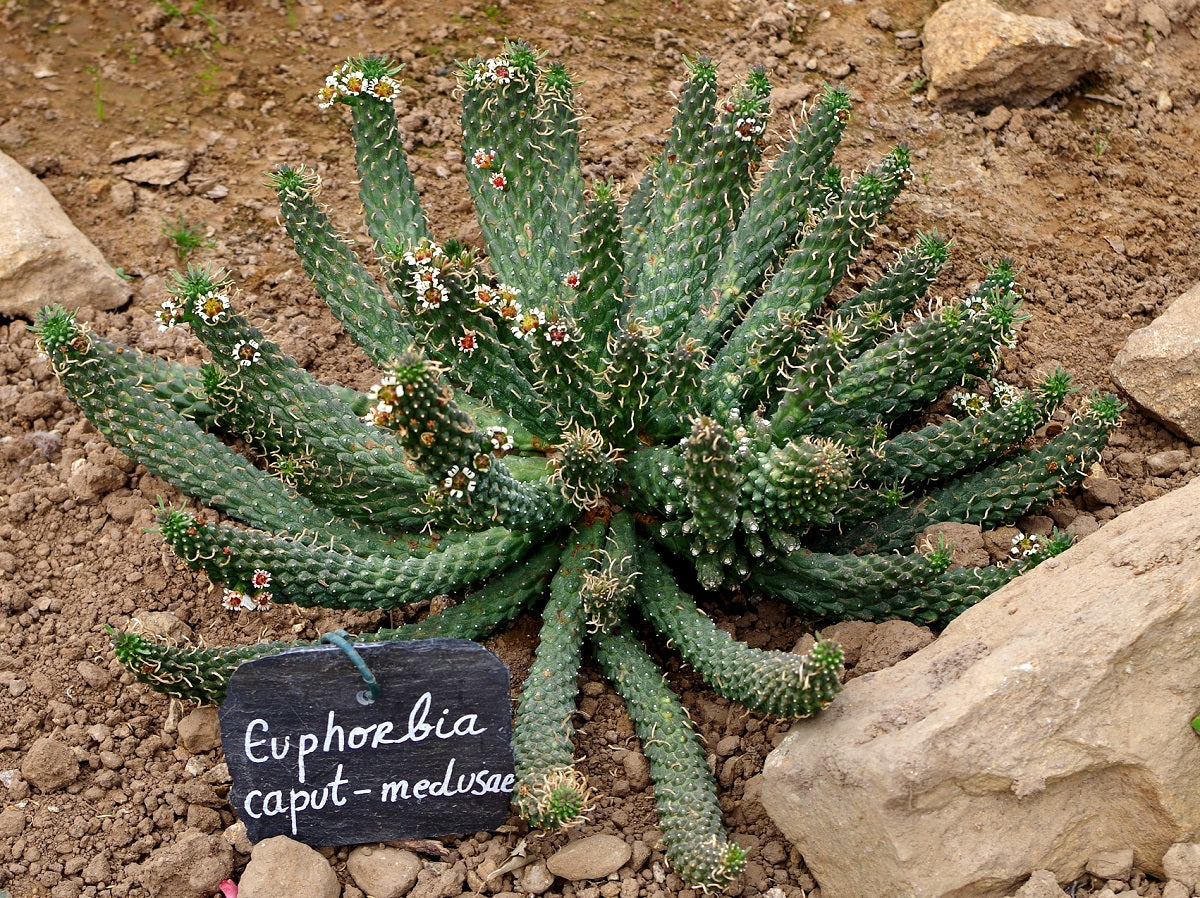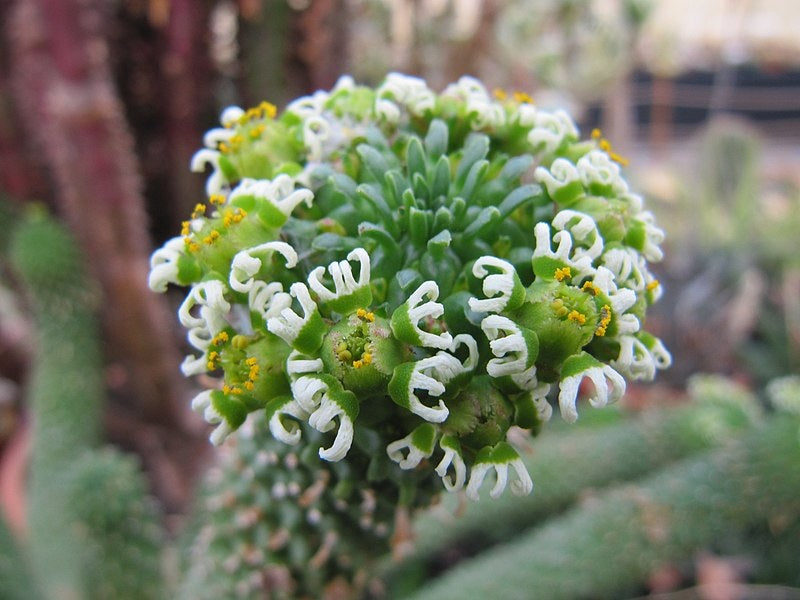Description
Euphorbia caput-medusae, commonly known as the Medusa's Head Plant, is a striking succulent native to South Africa. This unique plant features a central, often swollen stem from which numerous serpent-like branches radiate outward, resembling the mythological Medusa's head. The branches are green, cylindrical, and can grow up to 60 cm long, creating a sprawling, sculptural form that adds an exotic touch to any garden or indoor space.
In Perth's climate, the Medusa's Head Plant thrives in full sun to part shade, making it suitable for both outdoor rockeries and indoor pots placed near bright windows. It prefers well-draining, sandy or gritty soil and requires minimal watering—allow the soil to dry out completely between waterings to prevent root rot. This drought-tolerant plant is ideal for low-maintenance gardens and is best suited for containers or raised beds where its unique form can be showcased.
| Botanical Name | Euphorbia caput-medusae |
| Common Name | Medusa's Head Plant |
| Cultivar | |
|
Classification |
Succulents and Cacti |
| PBR Name | |
| Origin | South Africa |
| Foliage | Evergreen |
| Height | 30 - 60 cm |
| Width | 60 - 90 cm |
| Light | Full sun to part shade |
| Soil | Well-draining, sandy or gritty soil |
| Water Requirement | Low water; allow soil to dry between watering |
| Lifespan | Perennial |
| Flower Colour | Yellow |
| Flower Time | Djilba - Kambarang (Early Spring - Late Spring) |
| Toxicity | Toxic to humans and pets; contains a milky sap that can cause skin irritation and is harmful if ingested |
Disclaimer:
Information is intended as a guide only.
Unless otherwise stated, all images are examples only and not photos of the actual plants for sale.
Licensed images are used with permission of the license holder.
Payment & Security
Your payment information is processed securely. We do not store credit card details nor have access to your credit card information.


